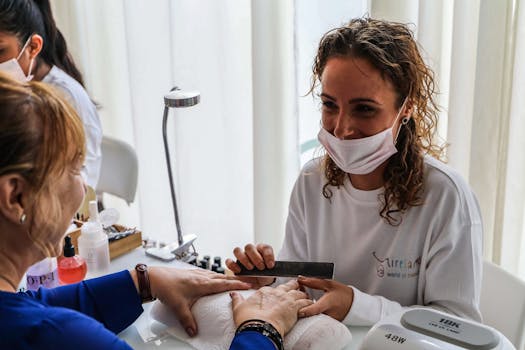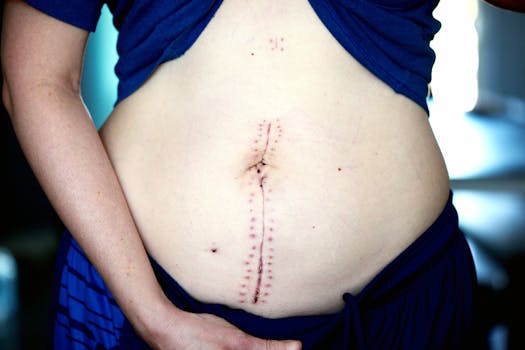Patients considering more extensive body contouring often want clear, practical information about extended procedures. The extended tummy tuck is a surgical option designed to address significant excess skin and weakened abdominal muscles that extend beyond the traditional lower-abdominal zone. This overview explains what the operation involves, who tends to benefit, how recovery typically progresses, and how it differs from other abdominoplasty variations so you can make an informed decision.
Extended abdominoplasty: what makes it different
An extended abdominoplasty stretches the excision and tightening laterally into the flanks and sometimes around the hips. Unlike a traditional abdominoplasty that focuses on the central lower abdomen, the extended approach removes a broader band of skin and fat and repairs muscle separation along a wider area. This results in a longer scar but often yields a smoother waistline and better overall contour for patients with more diffuse laxity.
Who is a typical candidate?
Good candidates are adults with stable weight who have significant excess skin after massive weight loss, multiple pregnancies, or prolonged stretching of the abdominal wall. Patients with localized fat but intact skin elasticity might be better suited to liposuction-only approaches. Surgeons also consider medical history, smoking status, and expectations; those with uncontrolled medical issues or unstable weight are usually advised to delay elective body contouring.
Procedure overview and recovery expectations
The operation is performed under general anesthesia and generally takes longer than a standard tummy tuck because of the extended dissection and closure. Drains are commonly used, and the closure often requires careful layered suturing to minimize tension. Immediate postoperative recovery includes swelling, bruising, and activity restrictions for several weeks. Most patients return to light activity within two to four weeks and avoid heavy lifting for six to eight weeks, though full aesthetic maturation can take many months.
Risks, outcomes, and follow-up care
Risks mirror those of other major surgeries: bleeding, infection, wound healing problems, seroma, and noticeable scarring. Because more tissue is removed, there can be increased risk of delayed healing at the incision edges. Long-term outcomes are typically favorable when patients maintain stable weight and follow postoperative instructions; scar management and compression garments can improve results.
How it compares: extended tummy tuck vs tummy tuck
When weighing options, the main differences are anatomic reach and scar length. A standard tummy tuck is less extensive, focusing on midline laxity and lower abdominal excess. The extended approach is chosen when laxity wraps around the sides, creating a smoother transition from abdomen to flanks. Surgeons may discuss less invasive alternatives like high-definition liposuction or combined procedures depending on the patient’s goals.
Variations and common terms you may encounter
Patients will encounter several descriptive labels in consultations. Some use “extreme tummy tuck” to describe very large resections after massive weight loss, while “hd tummy tuck” refers to procedures combined with high-definition liposuction to sculpt muscular contours. “Obese tummy tuck before and after” is a search phrase often used by those exploring realistic outcomes in patients with higher body mass. If you’re researching visual examples, looking up extended tummy tuck pictures from reputable clinics helps set expectations, though individual results vary.
Some patients also combine contouring with other enhancements; for example, those interested in breast contouring may research adjacent procedures like fat grafting. For practical information about combining body work with breast fat transfer and estimated costs, see fat transfer breast augmentation cost and what to expect.
For a technical overview of abdominoplasty techniques and general considerations, a concise resource is available at the abdominoplasty article on Wikipedia, which summarizes surgical variants and historical context: abdominoplasty (abdominal contouring) overview on Wikipedia.
Brief bulleted summary
- Extended abdominoplasty addresses excess skin and laxity extending into the flanks for a more continuous contour.
- Recovery is longer than a standard tuck and may require drains and activity restrictions.
- Risks increase with the amount of tissue removed; stable weight and smoking cessation improve outcomes.
FAQ
Q: How long will my scar be?
A: Scarring runs across the lower abdomen and extends laterally; length depends on how much lateral skin is removed. Scars typically fade over 12–18 months but remain permanent.
Q: Can liposuction replace an extended tummy tuck?
A: Liposuction can address excess fat but not redundant skin or significant muscle laxity. In many cases where skin excess is pronounced, liposuction alone is insufficient.
Q: Will insurance cover an extended abdominoplasty?
A: Insurance rarely covers cosmetic abdominoplasty. Coverage is possible in select cases where excess tissue causes skin conditions or functional impairment, but documentation and prior authorization are required.






